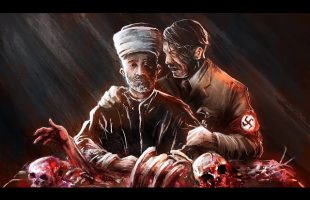Listen to us in Audio format with exclusive episodes found no where else.
Spotify: https://open.spotify.com/show/3HBJywUX2KwHtIJEopt7JL
Apple Podcasts: https://podcasts.apple.com/in/podcast/a-day-in-history/id1797936899
Few regimes could survive 13 years of civil war, but that is exactly what the Syrian regime of Bashar Al-Assad has done. Coming to power in 2000, Assad has spent most of his reign locked in a brutal civil war that rages to this day.
But what did the Assad regime do to inspire its people to take up arms against it? What brutality did it unleash in response? And how has that brutality allowed Assad to survive the civil war and, perhaps soon, win it altogether?
Today on A Day In History, we’ll look at the torture, assassinations, persecution, and massacres that have kept on the modern world’s most infamous dictators in power. If that sounds interesting to you, we’ve got all sorts of similar videos on our channel, and be sure to subscribe to keep up to date with future ones.
The Rise of the Assad Regime
Bashar’s story should begin with his father, Hafez Al-Assad. Hafez seized power in a coup in 1970 and set the tone of the regime his son would inherit.
In the first years of his reign, multiple potential and past enemies turned up dead. General Muhammad ‘Umran, an old adversary of Assad, was shot dead in his home in Lebanon in March 1972. Though he denied it, it was almost certainly Assad’s doing. A similar assassination befell former Prime Minister and founder of Assad’s ruling Ba’th Party, Salad al-Din al-Bitar, who was struck down in Paris. He had become a vocal critic of the regime since leaving the country.
The Assad regime had many enemies. With the regime’s secret police, the Mukhabarat, watching for any signs of dissent, and strict censorship in place to strangle critics before they could be heard, many of those enemies were too afraid to oppose it.
One of the only groups strong enough to do so were the Muslim Brotherhood. A Sunni political organisation, the fact that Hafez Al-Assad and his inner circle were members of the Alawite religious minority made them natural enemies. Through the mid-1970s and 1980s, the Assad regime contended with terror attacks and assassinations from the Muslim Brotherhood and other anti-Alawite Islamists. The Aleppo Artillery Academy Massacre in June 1979 was the deadliest such attack which left 35 people dead.
Assad’s response to the threat was characteristically brutal. Regular military operations against them placed Syria in a state of low-level civil war and Syrian prisons filled up with Brotherhood inmates. Torture and execution were typical, often in response to Brotherhood attacks. In 1980 for example, a Brotherhood assassin almost killed Assad with a grenade – the President kicked it away at the last moment while one of his bodyguards threw himself upon the other one. In response, Assad made membership of the Brotherhood carry the death penalty and ordered the summary execution of around 600 Brotherhood members held in the Palmyra prison.
#assad #syria #basharalassad
Sources:
James Brandon, ‘The PKK and Syria’s Kurds’, Global Terrorism Analysis, Vol 5 Issue 3, 15th February 2007, https://web.archive.org/web/20080917223313/http://www.jamestown.org/terrorism/news/article.php?articleid=2370250
James A. Reilly, Fragile Nation, Shattered Land: The Modern History of Syria, (2018)
Reese Elrich, Inside Syria, (2014)
Nikolaos Van Dam, Destroying a Nation: The Civil War in Syria, (2017)
Copyright © 2025 A Day In History. All rights reserved.
DISCLAIMER: All materials in these videos are used for entertainment purposes and fall within the guidelines of fair use. No copyright infringement intended. If you are, or represent, the copyright owner of materials used in this video, and have an issue with the use of said material, please send an email to adayinhistory2021@gmail.com


